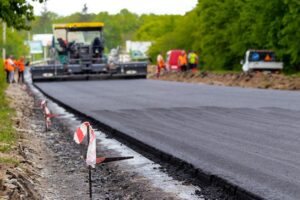Discovering the Wonders of Underground Services Installation
Most people do not pay much attention to underground services until something goes wrong. Underground services refer to the installed pipes, electrical lines, and cables that transmit essential utilities like gas, water, and electricity to buildings or homes. The importance of underground service installation cannot be overemphasized in modern society, where we are heavily reliant on these utilities. Sadly, this installation process poses its fair share of challenges, including adverse weather conditions and issues with route selection. However, a professional installation team can navigate any hurdle with ease. In this blog, we will take you through the process of discovering the wonders of underground services installation. Let us dive deeper into the fascinating world of underground utilities.
Types of underground services
Underground services installation involves laying various types of pipes, cables, and lines beneath the ground. Diverse services such as water supply, gas supply, electric lines, and fiber optic cables, all of which are crucial for everyday operations, can be installed underground.
Water supply pipes ensure a consistent water supply to homes and commercial buildings. Gas supply pipes supply gas to homes, factories, and plants. Electric lines are crucial in providing uninterrupted power supply for various domestic and industrial purposes. On the other hand, fiber optic cables ensure reliable and high-speed internet connection.
The installation process for each type of underground service is unique, depending on specific requirements for each service. The installation process for water supply pipes usually involves trenching, pipe laying, backfilling, and compaction. Similarly, gas supply pipes installation involves excavation, pipe connection, and pressure testing.
In conclusion, the installation of underground services requires careful planning and execution. With regular maintenance, it can provide reliable and safe operations for years. Let’s appreciate the real wonders of underground services installation.
Pre-installation process
The pre-installation process is a crucial stage in underground services installation. It involves various steps that need to be meticulously followed to ensure a successful project completion. The first step in this process is to conduct a site survey to gather vital information about the location, such as soil type, groundwater level, and any underground utilities. Design and planning follow, where the installation team determines the best installation method and creates a detailed plan.
To prevent any damage to existing utilities and ensure safe excavation, utility locates are carried out to identify and mark the location of any underground systems. Permits and approvals must also be obtained before the excavation process can begin. Failure to adhere to these rules could lead to significant consequences such as fines, lawsuits, or even utility service disruptions.
Although it may seem like a tedious process, pre-installation is what sets the foundation for a smooth installation process. By conducting thorough surveys, creating a detailed plan, and adhering to regulations, the team ensures that the project is completed safely and efficiently.
Installation process
Underground service installation involves a systematic approach that is critical in providing uninterrupted services. Trenching is the initial step where the ground is excavated to lay the pipelines. Pipe laying then follows, with all pipes aligned correctly and sealed according to the specifications. Backfilling, the process of returning the soil into the trench, is crucial to ensure stability and strength. Compaction is then done to ensure uniformity and stability of the backfilled soil.
The installation process requires seamless coordination, and all the steps must be carried out correctly to avoid future issues. It is essential to have experienced personnel who can ensure the work is completed according to the relevant standards. Any defects or deviations from the design must promptly be addressed to ensure quality delivery.
Installation of underground services is a risky exercise that requires strict adherence to safety measures. Safety is critical in underground service installation, and all personnel must be aware of the risks involved in the installation process. All safety measures must be closely observed to minimize hazards.
Post-installation process
Post-installation process: After the installation is done, the quality of work doesn’t end there. Strictly, it is vital to pressure-test the pipes to ensure there are no leaks. Any defects found should be rectified immediately, and the process repeated. The next crucial step is system flushing, which guarantees the pipelines are free from any debris that may cause clogging. Quality assurance verifies the system meets the project’s standards, and documentation involves recording all the critical information that will help future management and maintenance. It is essential to follow these processes to ensure reliability and safety. Remember, it’s not a job well done until all these are perfectly executed.
Safety measures
When it comes to underground services installation, safety should always be the top priority. Exposing utility lines and pipes can be dangerous, and excavation work can cause accidents if safety protocols are not followed. That’s why excavation safety is crucial in any underground services installation project. Utility marking helps identify the location of utility lines, preventing damage to gas, electricity, water, or fiber optic lines. And lastly, worksite safety measures must be in place, which include providing protective gear and creating a safe working environment. Remember, safety first!
Conclusion
As we’ve seen throughout this blog, underground services installation is a crucial process that requires careful planning, skilled labour, and strict adherence to safety regulations. Whether you’re installing water supply pipes, gas supply pipes, electric lines, or fiber optic cables, it’s important to follow the pre-installation, installation, and post-installation procedures we’ve discussed to ensure a safe and successful project completion. Remember to prioritize safety measures like excavation safety and worksite safety to prevent accidents and protect workers and equipment. With these considerations in mind, you’ll be well on your way to discovering the wonders of underground services installation.


